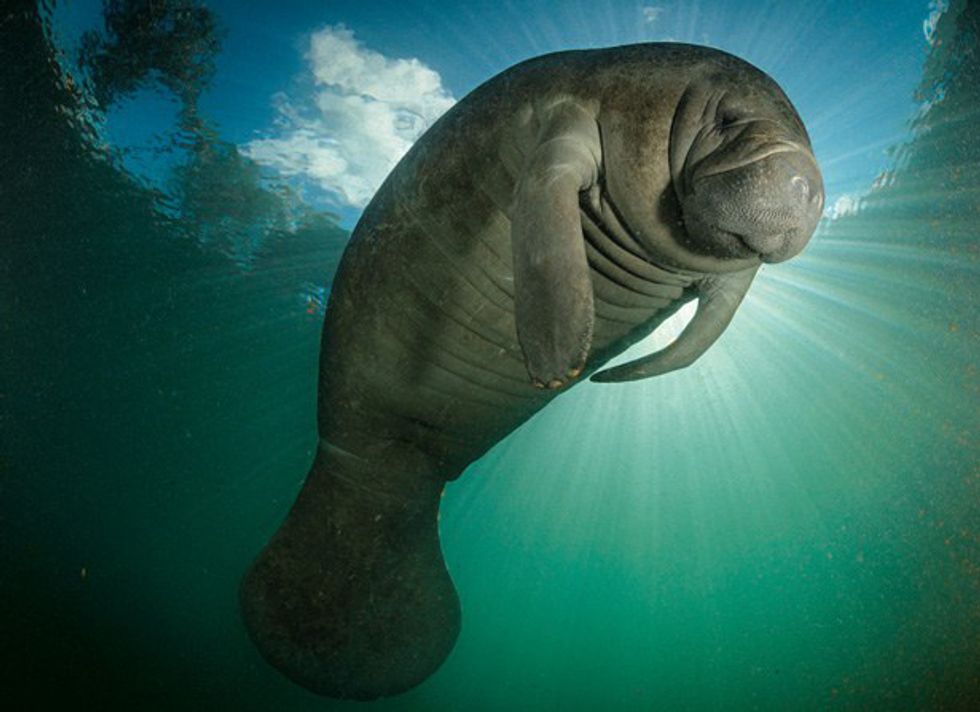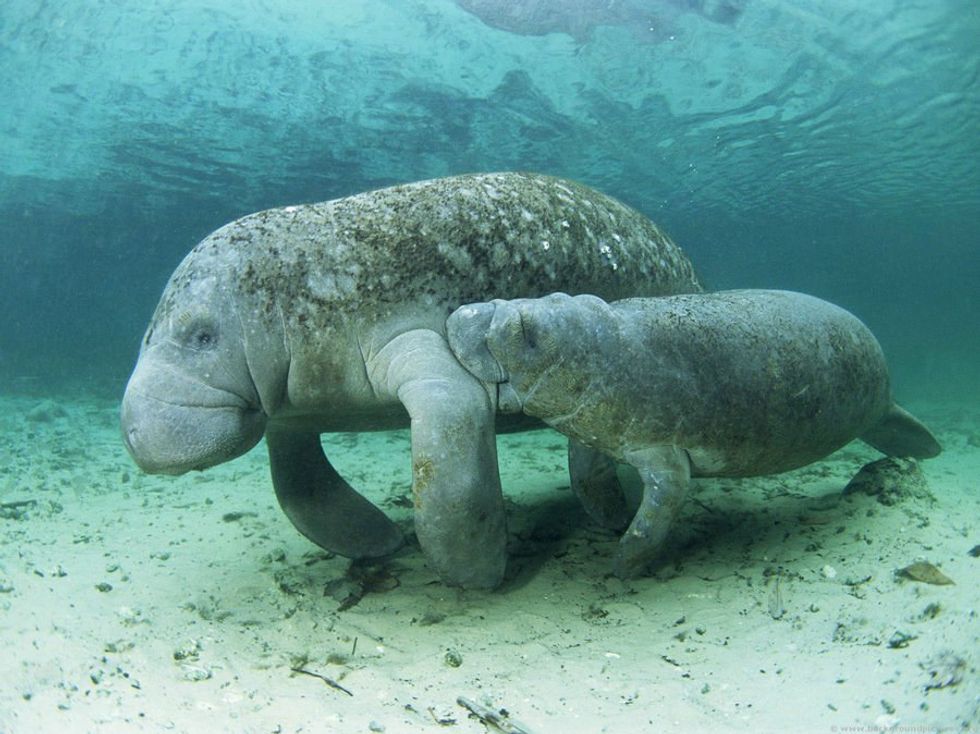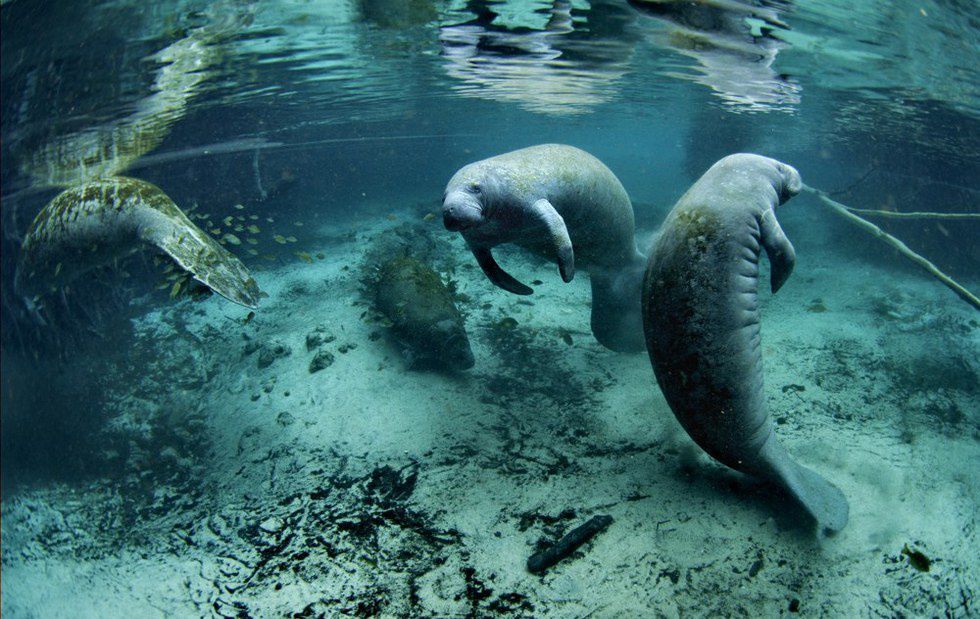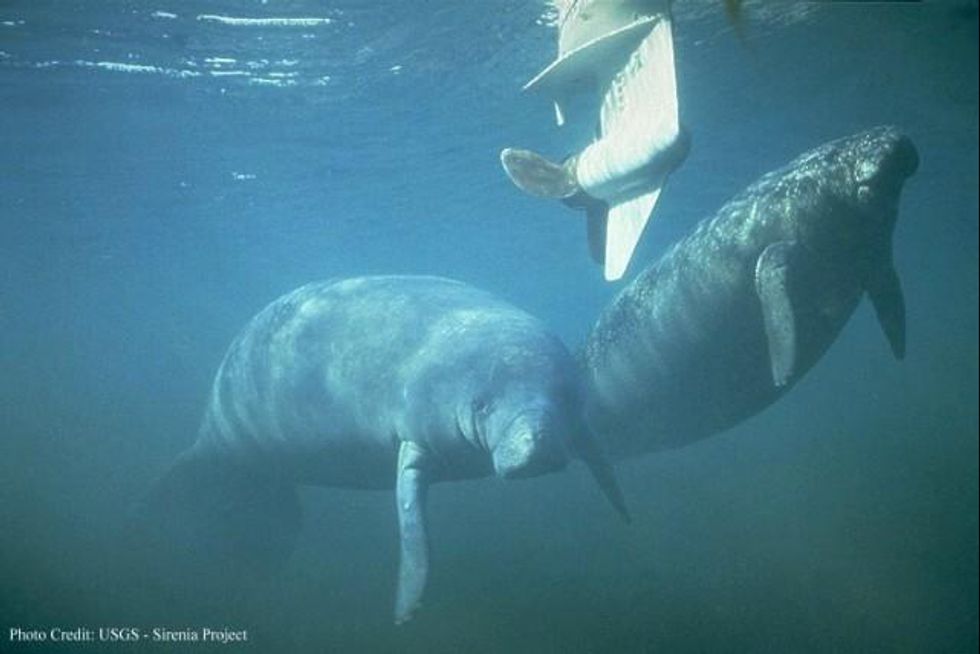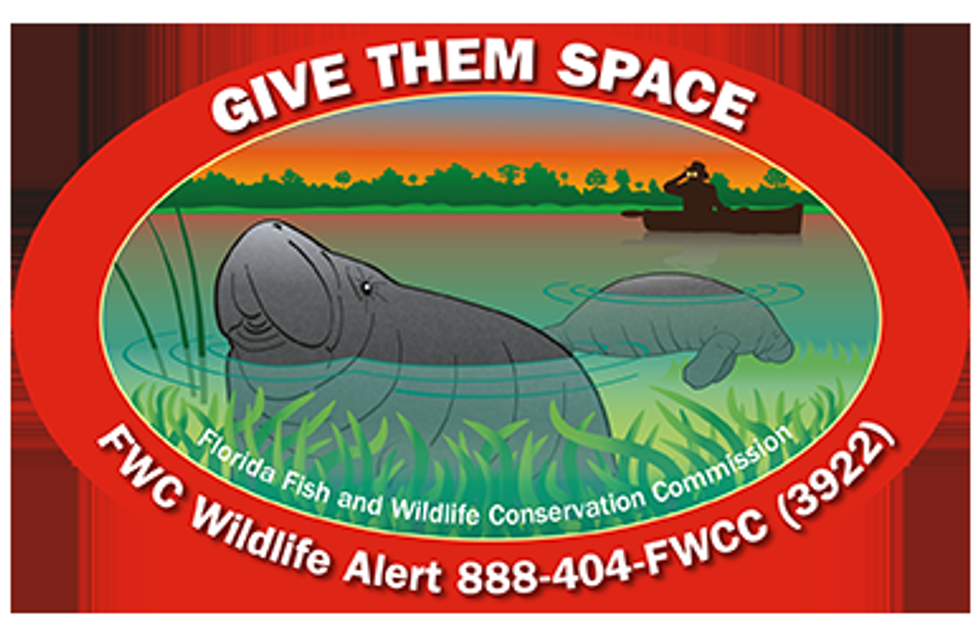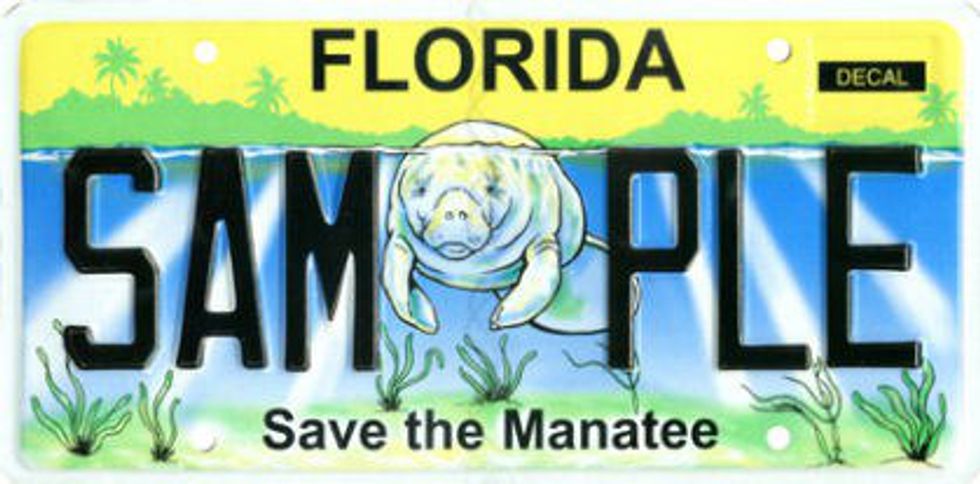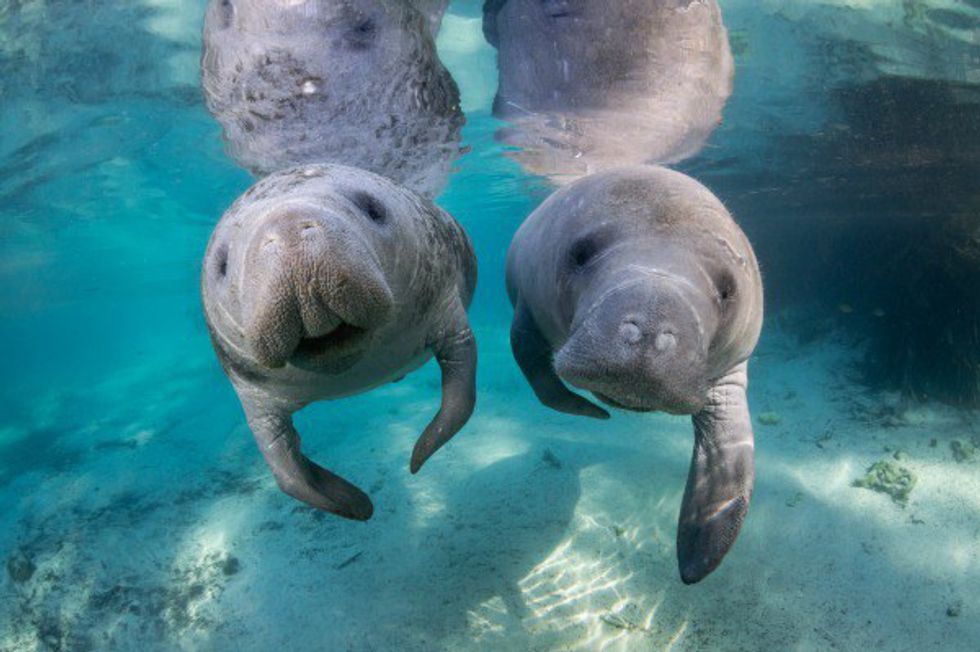One of Florida’s most valuable and overlooked aquatic animals is the manatee. They are gentle and adorable, but unfortunately they are also endangered. The Florida Manatee is a subspecies of the West Indian Manatee. They stay in the warm waters of Florida and the Gulf of Mexico surrounding the peninsula. They thrive in freshwater and brackish water. They cannot be in temperatures lower than 68 degrees Fahrenheit for very long. This is why they prefer the stay in the natural springs of Florida which stay approximately 70-72 degrees Fahrenheit year round. Manatees rest for anywhere from 2-12 hours resting either at the bottom of the water or near the surface, according to the Florida Fish and Wildlife Conservation Commission. Manatees’ nostrils are the only things to poke out of the water when they breathe. When active, they have to come up to the surface for air every three to five minutes. When resting, they come up for air only every 20 minutes.
The manatees are also commonly known as “sea cows” because of their diet of aquatic plants, mostly sea grasses, according to the manatee profile from the U.S. Fish and Wildlife Service. They spend up to eight hours a day eating, according to the Florida Fish and Wildlife Conservation Commission.
Manatees can grow to be over 14 feet long and weigh 3,000 pounds, but are usually only 10-12 feet and approximately 1,500 pounds. They are usually a brownish-grey color with algae on their backs. The best way to describe the feel of their skin is a leathery potato with little hairs all over because they are mammals. They have flat tails and flippers that propel them through the water at speeds up to 15 miles per hour according to the Florida Fish and Wildlife Conservation Commission. According to defenders.org, although they have small eyes and no outer ears, manatees can see and hear very well.
Because they are mammals, manatees have live babies. They usually only have one at a time after a gestation period of approximately a year. Due to the long gestation period and that only one calf is born at a time, the population is very slowly growing. According to the U.S. Fish and Wildlife Service, in 1991 there were 1,267 manatees in Florida. As of 2016, there are approximately 6,300 manatees in Florida. That is a very large increase in population for just a 25-year period. Because of this large increase in numbers, there is a petition to move the manatees from the endangered list to the threatened list. Although the manatees will move up a step towards a normal population count, the efforts to promote population growth are going to continue. The top killers of the manatees are collisions with boats, entanglement in fishing gear, natural algae blooms and cold weather. They are extremely valuable to the aquatic ecosystems of Florida. Without them, there would be over growth of aquatic plants in all waterways in Florida causing the waterways to no longer be navigable by boat. This would throw the ecosystem off completely.
How can you help?
To keep the gentle giants from going extinct, there are sanctuaries and areas that boats are not allowed or are restricted to slow speeds, as well as other rules and guidelines for boaters and swimmers.
Boaters:
Before heading out for the day, review the “Boater’s Guide to Living with Florida Manatees” from the Florida Fish and Wildlife Conservation Commission. Keep it as a reminder in case you come in contact with a manatee.
Things to remember, according to the Boater’s Guide to Living with Florida Manatees:
Always keep an eye out for manatees especially in freshwater areas like springs or spring fed rivers. If you see a manatee, give them plenty of room. Manatees don’t usually stay in groups except calves with their mothers, but they will interact with others so you can never be sure.
Don’t pass directly over them.
Don’t separate mothers and calves.
Keep an eye out for manatee footprints: circular wave patterns created by the manatee’s tail from swimming.
Polarized sunglasses will help you see the manatees better and of course are better for your eyes. It’s a win-win.
Manatees in the shallow areas will move into the middle of the channels if they hear boats. This puts the directly in the path of boats.
Do not give feed them or give them water. This teaches them to seek human interaction which puts them closer to boats and in harm’s way.
Do not enter areas designated as “No Entry, Manatee Refuge" areas.
Swimmers guidelines from the Florida Fish and Wildlife Conservation Commission:
Look, but do not touch manatees. Do not feed to give them water as it teaches them to seek human interaction
Do not chase or pursue a manatee.
Never poke, prod or stab manatee with hand, foot or other object.
If a manatee avoids you, you should avoid it.
Give manatees space. Do not isolate a manatee from its group. Do not separate a cow and her calf.
Keep hand and objects to yourself. Do not try to snag, hook, hold, grab, pinch or ride a manatee.
Avoid excessive noise and splashing is a manatee appears in your area.
Use snorkel gear to observe manatees. Bubbles from scuba gear may make manatees leave.
Float at surface of water to passively observe manatees.
Do not enter areas designated as “No Entry, Manatee Refuge” areas.
Again, look. Do not touch.
Fishing:
Do not try to hook or snag manatee.
Any extra line, wire or net should be disposed of properly in garbage cans on shore. Manatees can get tangled in it and can be injured.
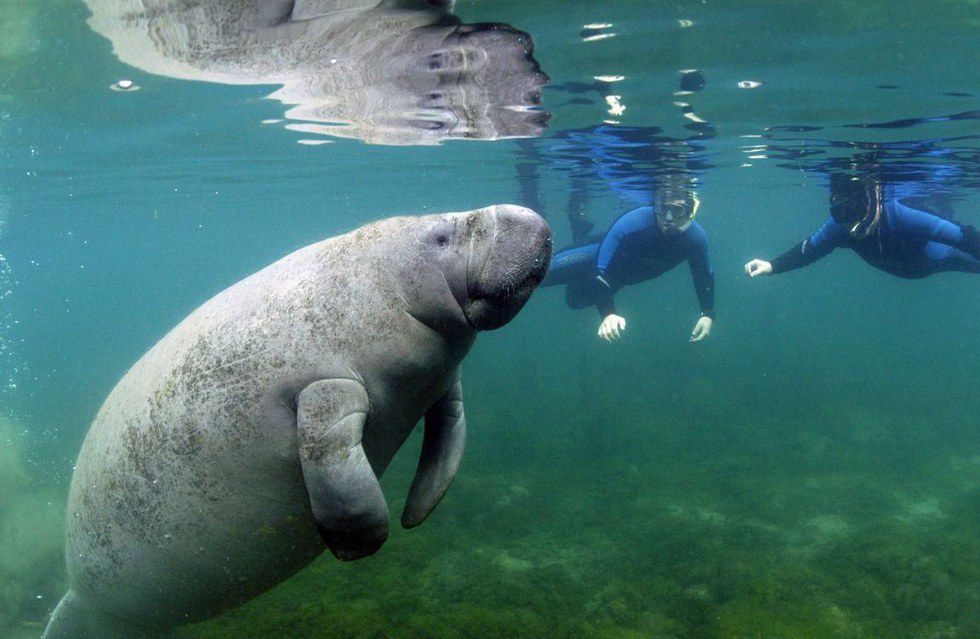
#FWC or *FWC on cell phone or text tip@MyFWC.com to report:
Accidental boat strikes to manatees.
Injured, distressed or dead manatees.
Orphaned baby manatees.
Entangled or trapped manatees.
Harassment off manatees.
Manatees caught in fishing gear.
Don’t try to help them yourself, wait for the FWC biologist. Stay with the manatee if possible to locate and provide more information to the biologist.
Other ways to help include donating $5.00 to receive a decal from the Florida Fish and Wildlife Conservation Commission. If you live in Florida, then you can get a manatee license plate from your local DMV. Proceeds from both go to helping injured manatees recover and be released back into their home.
Please be careful when boating and swimming to keep our manatees safe. These gentle giants are incredible and we need to do all we can do to help. Follow the rules and be smart. If you get the chance to see one of these adorable creatures, observe from a distance. It’s hard not to love their whiskery faces.


